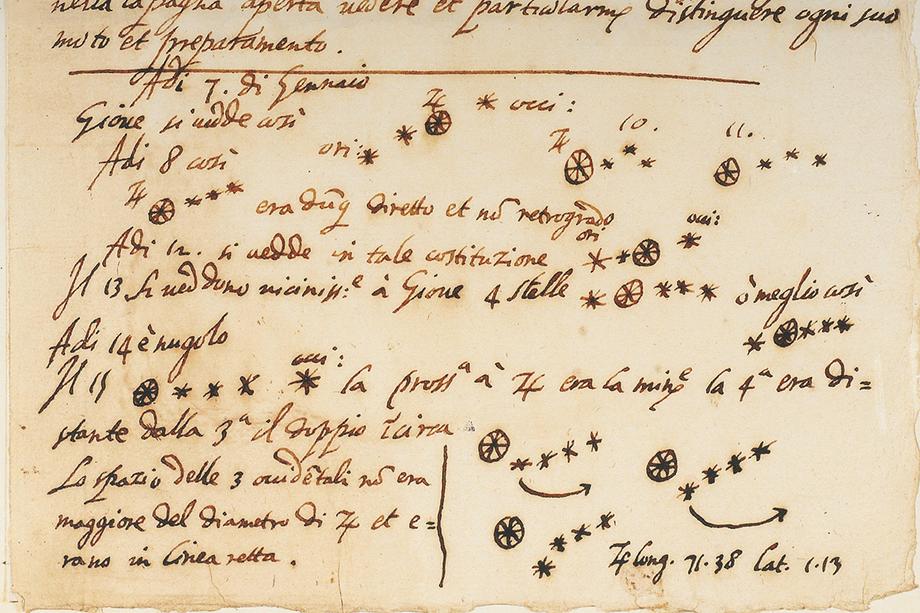The Galileo Manuscript
After an internal investigation of the findings of Nick Wilding, professor of history at Georgia State University, the library has concluded that its "Galileo manuscript" is in fact a 20th-century forgery.
We're grateful to Professor Wilding for sharing his findings, and are now working to reconsider the manuscript's role in our collection.
Background and provenance
For almost a century, the manuscript — a one-page document supposedly written by Galileo himself — has been one of the jewels at the University of Michigan Library.
The top half of it contains the draft of a letter accompanying Galileo's official presentation of a recently built telescope to the Doge of Venice on August 24, 1609. The bottom half contains draft notes recording Galileo's telescopic observations of the moons of Jupiter from January 7–15, 1610.
The final, genuine version of the letter is held in the Archivio di Stato di Venezia and the notes on the moons of Jupiter are part of the Sidereus Nuncius Dossier at the Biblioteca Nazionale Centrale di Firenze.
Our manuscript first came to public attention in May 1934, when the auction firm American Art Anderson Galleries was selling the library of the late Roderick Terry, a wealthy collector of manuscripts and early printed books. According to the auction catalog, it was authenticated by Cardinal Pietro Maffi (1858-1931), Archbishop of Pisa, who compared this leaf with a Galileo autograph letter in his collection.
It was acquired by Tracy McGregor, a Detroit businessman and avid collector of books and manuscripts. After his death, the Trustees of the McGregor Fund bequeathed the manuscript to the University of Michigan in 1938, in special recognition of the services to astronomy by Heber D. Curtis, professor of astronomy.

Authenticity
In May 2022, Curator Pablo Alvarez received an email from Wilding inquiring about the manuscript's watermark and provenance, and expressing serious doubts about its authenticity.
Wilding concluded that our Galileo manuscript is a 20th-century fake executed by the well-known forger Tobia Nicotra. After our own experts studied his most compelling evidence — about the paper and provenance — and reexamined the manuscript, we agreed with his conclusion.
Paper
In the hand press period, paper makers often used distinctive watermarks to identify their paper. We can date paper when its watermark is linked to a particular mill during a particular period.
The watermark on the “Galileo manuscript” contains monograms for the paper maker's initials — "AS" — and site of production — "BMO" (Bergamo). No other BMO watermarked papers have been dated before 1770, after which they are quite common.
Further, another forgery held in the Morgan Library and Museum in New York City has similar paper that has been securely dated to 1790.
Provenance
There is no trace of the document before 1930, despite the completion of the extremely thorough National Edition of Galileo's Works (1890-1909).
The document was accompanied at the Terry auction by a note from Archbishop Maffi, authenticating it by comparing it to two other Galileo documents in Pisa. While Maffi's letter of authentication is missing, those two alleged Galileo documents have been investigated and found to be forgeries donated by Tobia Nicotra. Nicotra was sentenced to two years in jail and a hefty fine in 1934 for forgery, including Galileo documents.